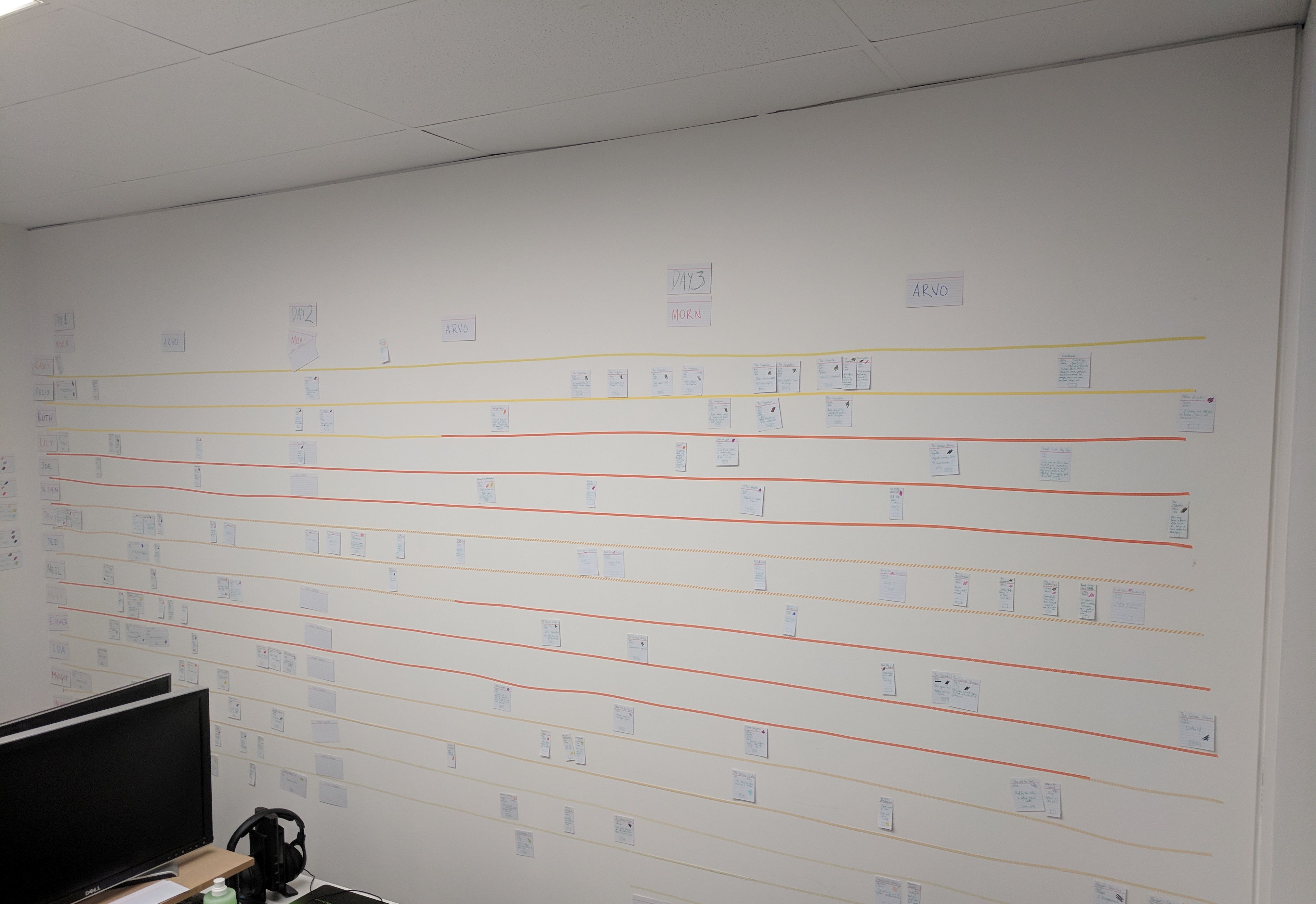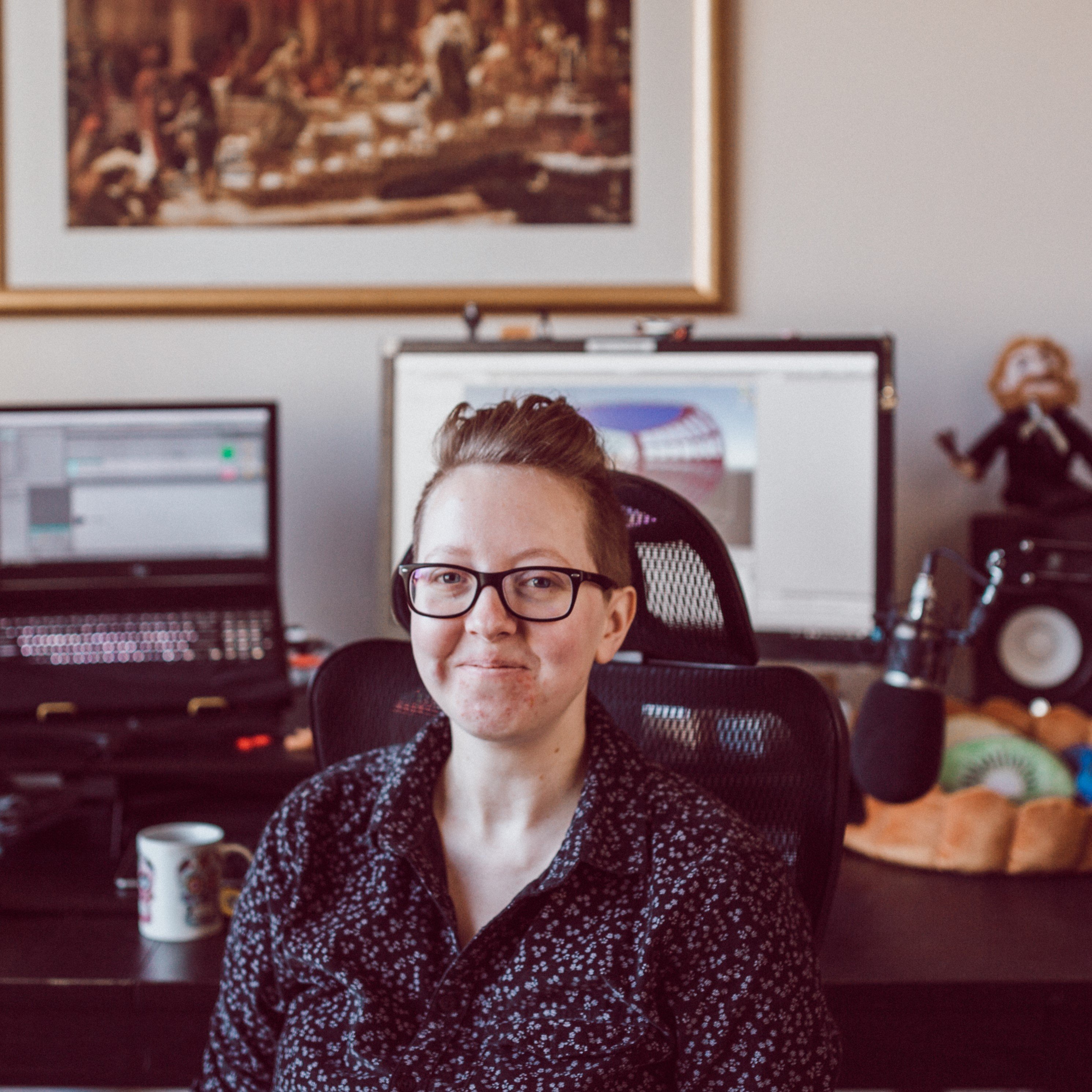In Wayward Strand, you play as 14 yo Casey Beaumaris, in 1978 regional coastal Australia. Over a Summer holiday weekend, your mum, who is head nurse of a flying hospital ship, takes you up to hang out with the oldies on the elderly ward.
The game format is inspired by immersive theatre. Everything is real-time, happening like clockwork on schedule. No matter where Casey is, the world continues. This leads to you really valuing the people who you manage to spend time with. And also, to wonder what everyone else on the ship was doing, while you were getting to know them.
With a cast of 14 actors, and 3 in-game days, while a single playthrough takes around 4 hours, the content is equivalent to over 18 feature films, with over 18,000 lines of fully voiced dialogue. We haven’t calculated exactly how many times you would need to play through to see every piece of content, but in the early days we calculated just Day One (the first hour), and it was over 80 times!

It was so important for us to have the game fully voiced. Like any indie game, budget is a huge constraint. There were points where we considered cutting VO altogether. But, thankfully we didn’t have to. One of the most important aspects of having VO is that the Australian accents really highlight the identity of the game. Even if a player doesn’t recognise the Australian bird sounds, or the animals in the imagery, the references in the dialogue, they can recognise our accents (most of the time!)
The voiceover also sets the pace of the game. With a core mechanic being time, it is much more intuitive to have natural voice over timing, than it is for the players to be skipping through silent text. Since release, we’ve also found that players will sit with characters and be immersed in the world. Having that really tangible element of time encourages the player to reflect on their understanding of the dialogue, including relating it back to their own lives and relationships.
The great thing about the Ghost Pattern team behind Wayward Strand, is that we come from all different backgrounds: games, theatre, live art, film, comics.
For me in a technical audio role, it’s especially great to have a lot of programming and tools design support. We’ve gotten lots of requests for VO pipeline advice since publicising the amount in our game, and I think the key to our being able to achieve all this, is the makeup of the team.
Georgia Symons
- Actor liaison
- Casting
- Actor director
Jason Bakker
- Supervising tools development
- Actor co-directing
- Notation during recording process
Thomas Ingram
- Script parsing tools development
Tfer Newsome
- Supervising VO editing
- Recording pipeline design
- VO editing
Maize Wallin
- Technical audio direction
- Recording engineer
- Recording pipeline design
- VO editing
Allison Walker
- Recording engineer
- Recording pipeline design
- VO editing
Kyra Bellamy
- VO editing
Together this team was able to practice, design, and implement all the tools that would:
1. Take the script written in our narrative tools in Ink and Unity and:
- Convert it into readable scripts for actors
- Convert it into spreadsheets needed for recording notes, and for importing into Pro Tools
2. Design the process of recording non linear scripts, for actors unfamiliar with video games
3. Design the process that seamlessly communicates between engineers, notation, and actors to record into designed Pro Tools sessions
4. Translate this whole process to one that could be integrated into the processes of remote recording studios
5. A/B test the remote studios
6. Enable and optimise the editing process of all the VO, with four engineers working simultaneously, while keeping a cohesive sound
7. Handle the implementation of all the VO back in to Unity
We needed our team to be incredibly cohesive. We all felt the rhythm of moving as one through each of the tasks. The remote engineers would all remark that we were the most organised clients they had ever worked with, and that they were seamlessly sucked into our team and rhythm. And actors told us that they felt so much a part of the team: that while they’d had no idea of what to expect when working on a videogame, they look forward to working on the next one.
So, we also had some extra people on our team, from the remote studios!
We worked with Innenhof (Vienna), Voiceover Soho (London), and ZigZag (Sydney), all remotely. Luckily, it being 2022, all the studios had setups to do remote recordings. We did however, still get them to do some A/B testing.
To each studio we sent our requirements:
- Super dry sounding studio
- Neumann U87 microphone
- Record between 50-60cm
- Low gain
- Colourless interface
Each studio sent back a few options of interfaces, distances from the mic, and gain levels. We would then see how much work it was to edit these samples to our control sample that we recorded at Original Score studio in Melbourne. And that way, we picked the best arrangement.
We had a bit of trouble finding the right studio for us in London. Somehow, lots of rooms with resonances! But, Voiceover Soho were able to set up some more panels and fabric to remove it. It’s a careful balance between room tone and interface colour! But, we decided that we’d rather deal with editing room tone, than interface colour, hence the choice of low gain.
When trying to have a cohesive sound across 5 studios from around the world, you can have the same mic and position, but you then need to choose whether you’ll be cleaning room tone, or interface colour. We chose to go with room tone as our skills meant we’d rather deal with that, so we asked studios to use as little gain as possible.
The U87 was a mic that most studios had. Definitely a real standard studio mic, in our experience!
---
In the 2nd part of this 3-part series, Maize dives into Pro Tools set-up, spreadsheets & the VO editing process. Read it here.


Comments